This post may contain affiliate links. At no cost to you, purchases made through these links may result in a small commission for Traveling Transylvania. We never recommend products that we don’t know and trust. Thank you for your continued support!
Dive into a realm of intrigue, nostalgia, and, dare we say, a touch of the mystical? Welcome to the world of tuica, Romania’s treasured spirit. When one sips on this distilled wonder, it’s not just about tasting a drink—it’s about immersing oneself in a tale as old as the Carpathians.
But tuica isn’t just a beverage. It’s an emblem of the Romanian heartland, an echo of laughter from family gatherings, a whisper of ancient traditions passed down through generations. Ever seen frost-kissed plums at dawn, waiting for their transformation? Or the gleam in a villager’s eye as they proudly share their ancestral brew? Yes, every sip of tuica unfolds a story, and every aroma wafts with memories.
Pair this spirit with traditional Romanian dishes, and the symphony it creates is akin to an embrace from a Transylvanian grandmother. Rich, hearty, and warm, embodying the very soul of the land. And if you find yourself wandering the alleyways of Transylvania, seeking the best tuica becomes not just a quest but a rite of passage.
Embarking on this journey with tuica is a dalliance with Romanian essence. Whether you’re in it for the rich history, the artisanal touch, or simply the tantalizing taste, brace yourself—tuica promises a dance with the divine.
- First Things First – How Do You Pronounce ‘Tuica’?
- What is Tuica?
- History of Țuică
- How is Țuică Made?
- Palinca vs. Țuică
- Where to Find the Best Țuică in Transylvania
- Types of Țuică
- Tuica Cocktails: A Modern Twist on a Timeless Spirit
- Discovering Tuica: Tips, Recommendations, and Where to Buy
- A Tuica Toast: Celebrating Romania’s Liquid Legacy
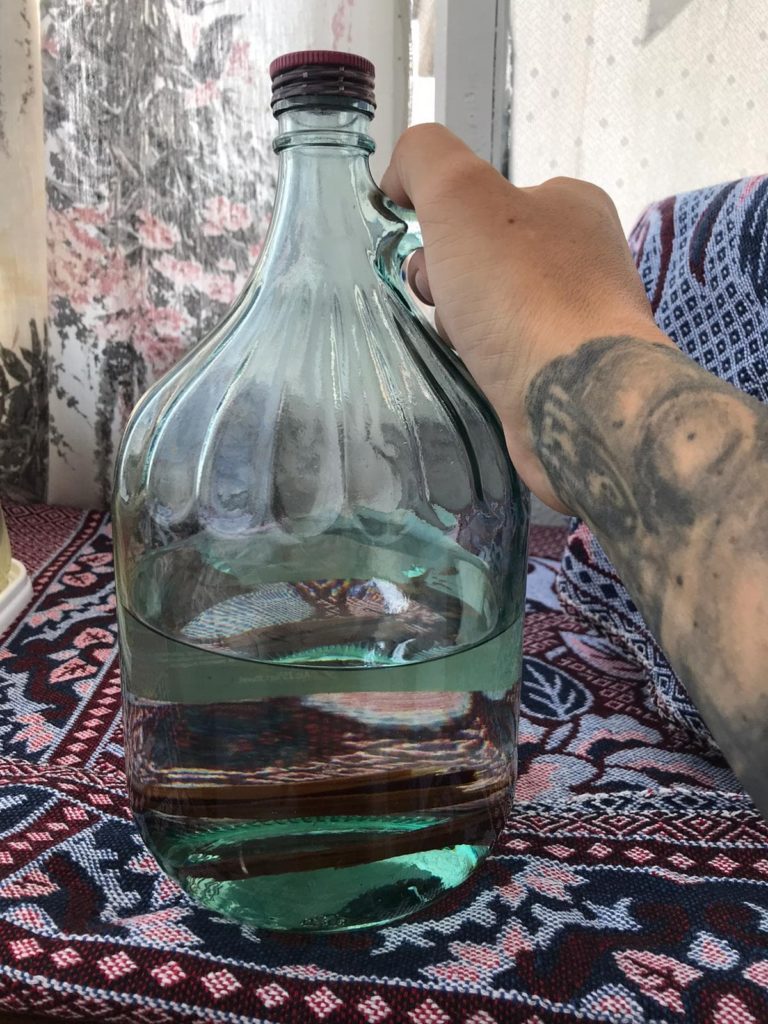
First Things First – How Do You Pronounce ‘Tuica’?
“Țuică” is pronounced as “TSWEE-kah.”
The “ț” sound is similar to the “ts” in “bits.” The accent on the “i” elongates the sound, so you emphasize the “ee” part a bit more.
What is Tuica?
Țuică, at its heart, is a fruit brandy. Not just any brandy, but one that’s deeply interwoven into the fabric of Romanian life. Primarily crafted from plums (though other fruits can play a starring role), this spirit bears the essence of Romania’s fertile orchards. The aroma? A tantalizing blend of the earth’s sweetness and a tinge of fiery passion.
Most commonly enjoyed during life’s milestones—weddings, christenings, or even hearty Sunday family feasts—tuica is more than just a drink. It’s the liquid embodiment of Romanian tradition and hospitality. Imagine being greeted with a shot glass filled with clear, shimmering tuica, its aroma beckoning you to taste. That’s Romania saying, “Welcome, you’re family now.”
However, a quick pointer for the uninitiated: this isn’t a spirit to be chugged or downed in haste. Țuică demands respect. To truly appreciate its layers and depth, one must sip slowly, letting it dance on the palate, revealing its tales of sun-kissed orchards and generations of craftsmanship. Trust me, I’ve made this mistake far more times than I’d care to admit.
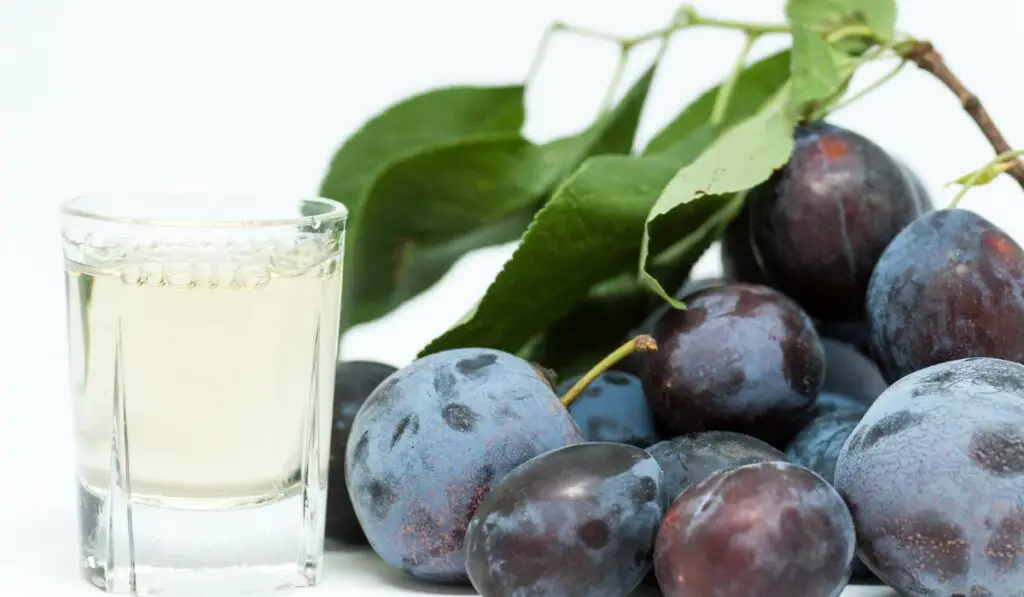
History of Țuică
The history of tuica is deeply rooted in the traditions and cultural fabric of Romania, dating back centuries. Let’s embark on a factual journey through the annals of this iconic spirit’s evolution.
Origins: The precise origins of tuica are not well-documented, but it’s believed that the tradition of fermenting and distilling fruits, particularly plums, has existed in the region for over a thousand years. Early archaeological evidence, such as ancient distillation apparatus, indicates the presence of spirit-making practices in the Carpathian region.
Medieval Times: References to tuica can be found in Romanian historical texts and documents from the medieval period. It was during these times that Țuică began to establish its significance, not only as a household drink but also as a medium of trade in some areas.
Industrialization: With the advent of industrialization in the 19th and 20th centuries, the production of tuica saw both refinement in distillation techniques and a rise in homemade distilleries. Despite technological advancements, many producers clung to traditional methods, valuing the authenticity and unique taste profiles they offered.
Cultural Significance: Over the centuries, tuica has woven itself into various Romanian customs and traditions. From religious ceremonies such as christenings and weddings to communal gatherings at harvest times, tuica has been a consistent symbol of celebration, unity, and hospitality.
Modern Day: Today, while the process of making Țuică retains its traditional essence, there have been efforts to standardize and regulate its production for commercial markets, ensuring consistency in quality and taste.
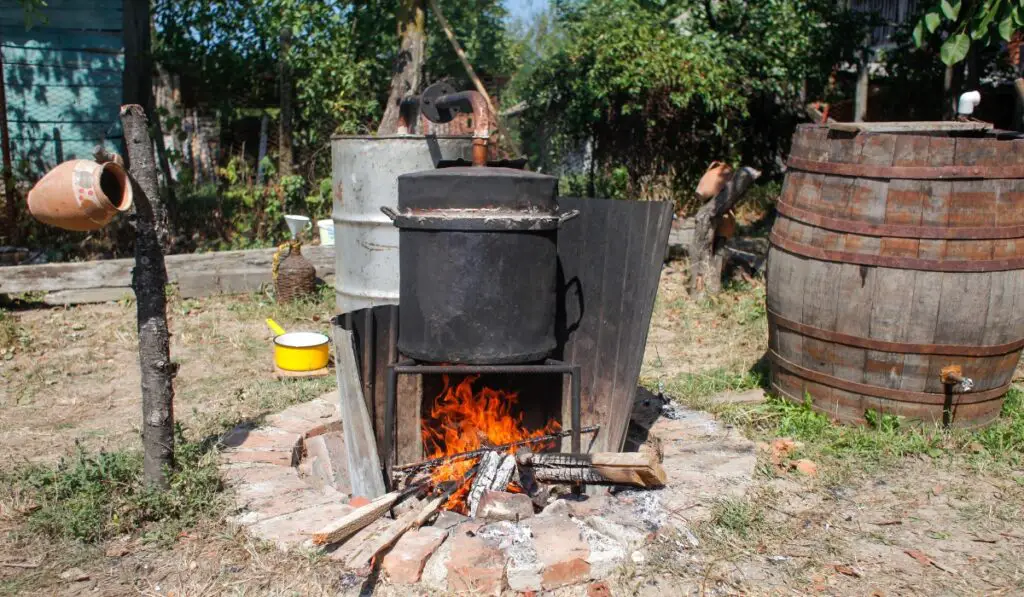
How is Țuică Made?
Embark on an enchanting journey from orchard to glass, where nature’s gifts are magically transformed into Romania’s beloved spirit: Țuică. The process begins with the meticulous selection of fruits. While plums reign supreme in traditional tuica, apples, pears, and cherries have also found their way into this alchemical dance. Once harvested, these handpicked fruits are mashed, with their juices primed for fermentation. Left to their natural devices in wooden vats or barrels, the sugars within the fruits break down over weeks, thanks to nature’s yeasts, producing a pure alcoholic essence devoid of additives.
The artistry elevates during the distillation phase. The fermented mash journeys through traditional copper stills, where it undergoes not one, but two distillations. This intricate process refines the spirit, accentuating its alcohol content and flavor nuances. Some connoisseurs, valuing depth and sophistication, age the Țuică in oak barrels. This gentle maturation imbues the drink with rich undertones of vanilla, caramel, or even a hint of spice, depending on its tenure within the barrel.
But the true magic of tuica unfurls when it’s served—traditionally at room temperature. Its symphony of flavors is best relished unhurriedly, often complemented by mămăligă (polenta) or brânză (cheese). In the vast panorama of spirits, Țuică gleams as a beacon of Romania’s unwavering commitment to authenticity, tradition, and the sheer joy of craftsmanship.
Palinca vs. Țuică
In the spirit-splashed tapestry of Romania, two names often stand out, each with its own tale and fervor: tuica and palinca. While they may appear siblings at a cursory glance, delve deeper, and their individual nuances shimmer to the fore. Let’s embark on a spirited sojourn to discern the intricacies that set these two apart.
Origins: Both tuica and palinca have roots deeply embedded in Eastern European traditions. While tuica has predominantly Romanian lineage, palinca finds its heritage spread across Hungary, Romania, and other parts of the Carpathian basin.
Fruit Base: Țuică, as we’ve ventured into before, is majorly distilled from plums, though apples, pears, and cherries can also be its muse. Palinca, on the other hand, is more versatile in its choice of fruit base. Beyond plums, it’s commonly made from apricots, apples, and even grapes, depending on the region.
Distillation: The art of distillation paints a distinguishing stroke between the two. Tuica traditionally undergoes a single distillation process. Palinca, adhering to its rigorous standards, is often distilled twice, resulting in a spirit that’s potent, with an alcohol content that can touch the higher ends of the scale.
Geographical Indications: In the realms of legislation, the term “palinca” is protected within the European Union as a product of Hungary and Romania. Specific regions within these countries are allowed to label their distilled fruit brandy as palinca, underlining its authenticity and connection to its homeland.
Taste and Potency: While both spirits are celebrated for their robust profiles, palinca often packs a stronger punch, both in terms of alcohol content and flavor intensity. Țuică, meanwhile, is revered for its smoother finish and nuanced flavors, capturing the essence of its primary fruit.
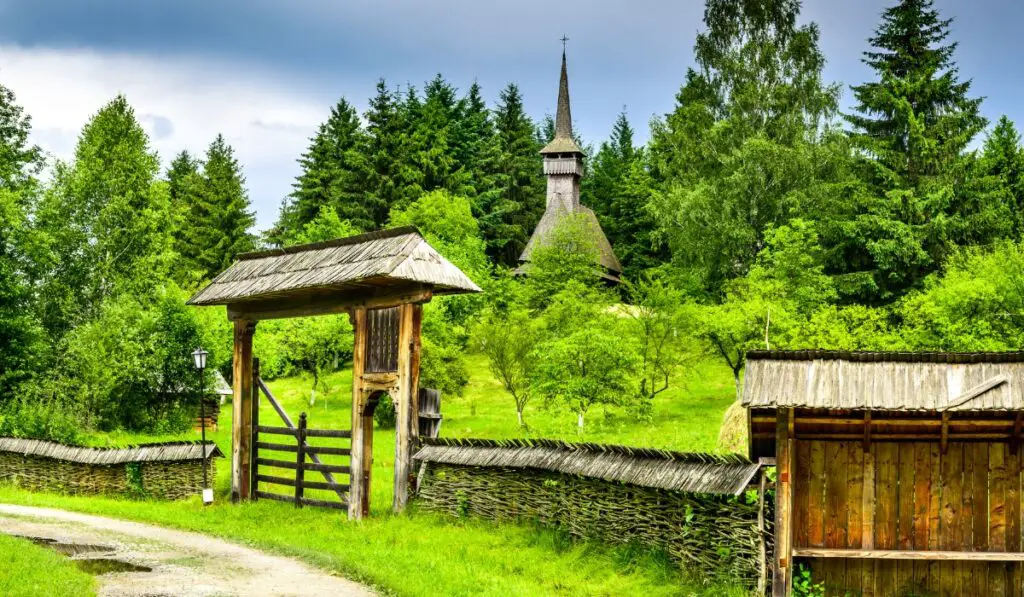
Where to Find the Best Țuică in Transylvania
Transylvania, a realm of enigmatic landscapes and tales as old as time, is not only steeped in legends but also in the rich heritage of spirit-making. When one speaks of tuica, the heart invariably gravitates towards one particular county: Maramureș. Let’s journey through the spirited lanes of Transylvania, focusing on its crown jewel and branching out to the broader tapestry of Romania.
Maramureș: The Țuică Capital: Often referred to as the heartland of tuica, Maramureș stands as the premier tuica-producing county in Transylvania, if not all of Romania. With traditions that have resisted the tides of modernity, this region boasts of tuica-making methods passed down through countless generations. Here, plums reign supreme, transformed with expertise into the spirit that has become synonymous with Romanian culture. The village of Sârb, in particular, is a name whispered reverently among tuica enthusiasts. Annually, it hosts the “Festival of Tuica,” a vibrant event that celebrates this cherished drink, drawing aficionados from near and far.
Beyond Maramureș: While Maramureș is undeniably the epicenter of tuica production, the beauty of Romania is that you can find authentic tuica virtually anywhere. From the bustling streets of Sibiu and Brașov to the quiet hamlets tucked away in the Carpathians, Țuică flows generously. Be it aged variants with rich, complex notes or the fresh, clear spirit that captures the essence of its fruit – every corner has a tuica tale to tell.
Whether you’re in the heart of Maramureș, the bustling streets of Cluj, or even a remote countryside inn, tuica stands as a testament to the enduring spirit of Romania and its people. As you sip, know that you’re partaking in a legacy, a liquid ode to a nation’s soul.

Types of Țuică
Venture deeper into the world of tuica, and you’ll find it’s not just a one-note wonder. Beyond the famed plum base, this delightful spirit embraces a diverse fruit ensemble, each rendition telling a distinct story. Allow me to introduce you to the symphony of flavors that tuica has mastered over the years.
1. Tuica de Prune (Plum Tuica)
Arguably the most renowned and cherished variant, plum tuica is the quintessential Romanian spirit. It encapsulates the soul of autumnal orchards, with each sip reminiscent of ripe plums basking under the Transylvanian sun. With its balanced sweetness and subtle tart undertones, it’s no wonder this variant has become emblematic of the nation.
2. Tuica de Mere (Apple Țuică)
Sourced from the crisp orchards, predominantly in regions like Sibiu, apple tuica is a lighter, fresher alternative. It carries the delicate fragrance of fresh apples, complemented by a slightly tangy finish, perfect for those seeking a gentle introduction to the world of tuica.
3. Tuica de Pere (Pear Tuica)
An elegant and often overlooked member of the tuica family, pear tuica is all about finesse. With its mellow, almost velvety texture and a hint of floral notes, it’s a drink that asks to be savored slowly, preferably on a cool evening.
4. Tuica de Cireșe (Cherry Tuica)
A more adventurous spin on the classic, cherry tuica combines the inherent sweetness of cherries with the robust body of the spirit. Its deep red hue and slightly tart profile make it a favorite among those with a penchant for the unconventional.
It’s fascinating how one spirit, deeply rooted in tradition, can showcase such a vast spectrum of flavors. As you traverse the different types of tuica, remember that each variant, whether plum or cherry, is a narrative in itself—capturing the essence of Romanian orchards, the passion of its distillers, and the timeless allure of Transylvania. So, here’s to tuica – in all its fruity glory!
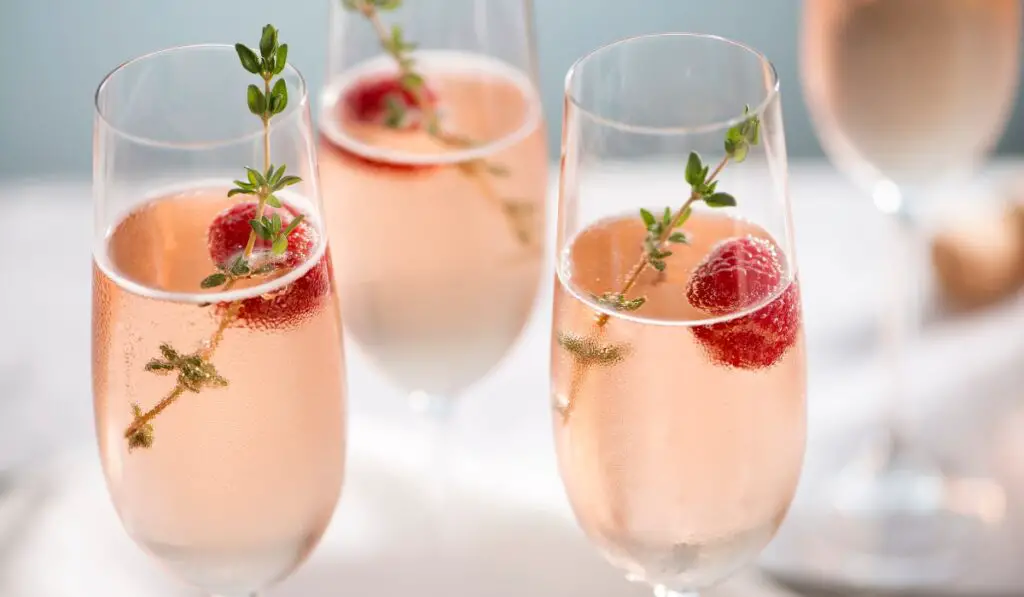
Tuica Cocktails: A Modern Twist on a Timeless Spirit
In the dynamic tapestry of the global cocktail scene, tuica has been gracefully dancing its way into modern mixology. While it’s deeply revered in its traditional form, there’s a contemporary renaissance where mixologists weave this iconic spirit into creations that delight, surprise, and pay homage to its Romanian roots. Let’s dive into a realm where tuica mingles with other ingredients to craft unforgettable liquid symphonies.
1. Transylvanian Sunset:
Ingredients:
2 oz tuica de prune
1 oz fresh orange juice
0.5 oz grenadine
Orange slice and cherry for garnish
Method: In a shaker, combine tuica, orange juice, and ice. Shake well and strain into a glass. Slowly pour grenadine to settle at the bottom, creating a sunset effect. Garnish with an orange slice and cherry.
2. Carpathian Whisper:
Ingredients:
1.5 oz apple tuica
0.5 oz lemon juice
1 oz honey syrup (equal parts honey and water)
Sprig of rosemary
Method: Combine apple tuica, lemon juice, and honey syrup in a shaker filled with ice. Shake vigorously and strain into a glass. Garnish with a fresh sprig of rosemary.
3. Romanian Rhapsody:
Ingredients:
2 oz cherry tuica
1 oz lime juice
0.5 oz simple syrup
Soda water
Lime wheel and cherry for garnish
Method: In a glass filled with ice, mix cherry tuica, lime juice, and simple syrup. Top with soda water and gently stir. Garnish with a lime wheel and cherry.
4. Prahova Valley Bliss:
Ingredients:
1.5 oz pear tuica
1 oz elderflower liqueur
Prosecco or sparkling wine
Lemon twist for garnish
Method: In a champagne flute, combine pear tuica and elderflower liqueur. Top with Prosecco or sparkling wine and garnish with a lemon twist.
Crafting these cocktails is not just about blending flavors; it’s an art, a dance between tradition and innovation. Each concoction pays tribute to tuica’s storied past while embracing the future. So, whether you’re at a chic urban bar or nestled in a Romanian countryside inn, when you come across a tuica cocktail, know that it’s a drink that has journeyed through time, carrying tales of both yesteryears and tomorrow. Cheers to adventures in a glass!
Discovering Tuica: Tips, Recommendations, and Where to Buy
Stepping into the vast landscape of Romanian spirits, with tuica as its shining beacon, might initially seem daunting. Yet, with the right guidance, procuring a bottle or two of this iconic drink can be a delightful adventure, whether you’re in Romania or on the other side of the world. Let’s embark on a quest to find the ideal bottle of tuica, understanding where to look and what to expect.
Navigating Romanian Markets and Shops
Romania, with its rich tapestry of tradition, has numerous local markets where artisans proudly display their tuica. Often sold in artisanal bottles or even reused bottles of all shapes and sizes, these local variants provide a genuine taste of the region. Be prepared for robust flavors, as these often pack a punch!
Dedicated Distilleries in Romania
If you’re touring Romania, consider visiting dedicated distilleries, particularly in the Maramureș region. Not only will you be privy to the tuica-making process, but these places often offer tasting sessions, allowing you to select a flavor profile that suits your palate best.
International Liquor Stores
For those seeking tuica outside Romania, fret not! Many international liquor stores, especially those with a vast European collection, stock Romanian tuica. Brands like “Zetea” have gained recognition and are available in multiple countries.
Online Platforms
In this digital age, websites dedicated to global spirits often feature tuica. Sites like ‘Master of Malt’ or ‘The Whisky Exchange’ might carry selections of tuica. However, always ensure the legitimacy of the website and understand shipping regulations and restrictions. Or, find a local option that ships internationally, like this one.
Authentic Romanian Restaurants Abroad
Romanian eateries outside Romania, keen on offering a holistic experience, often have tuica on their menu. It’s an excellent way to get introduced to the spirit, especially when paired with traditional Romanian dishes.
A Word of Caution
When buying tuica, especially from local markets in Romania, always ensure it’s from a reputable source. Authentic tuica is a delight, but poorly made spirits can be harmful.
Embarking on the journey to discover tuica is akin to traversing the diverse landscapes of Romania – filled with wonder, tradition, and an essence that’s unmistakably unique. Whether you’re raising a toast in a Bucharest bar, savoring a sip in San Francisco, or delighting in a dram in Dublin, remember, each drop carries the soul of Romania, a narrative of its people, and the passion of its makers. To tuica – a drink that transcends borders and unites spirits!
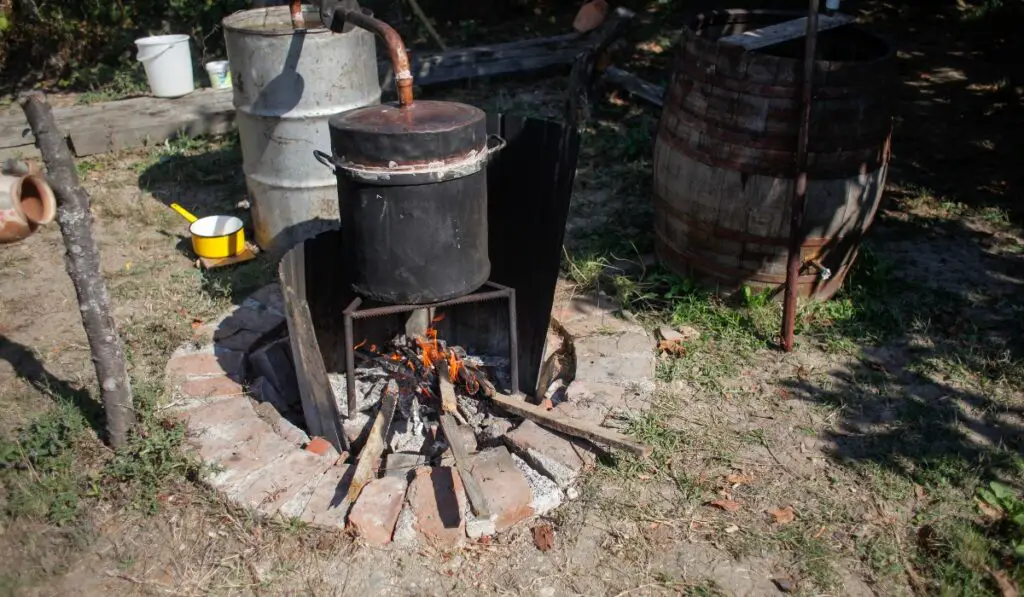
A Tuica Toast: Celebrating Romania’s Liquid Legacy
As our spirited journey through the valleys and orchards of Romania winds to a close, it becomes evident that tuica isn’t merely a drink—it’s a narrative, a love letter to Romania’s rich heritage and unyielding spirit. From its ancient origins, the tapestry of fruity variations, to the modern cocktail scenes it graces, tuica remains an emblem of Romanian warmth, hospitality, and cultural pride.
While the intricate process of crafting this drink might have evolved, the essence remains unchanged—a distillation of the Romanian soul. Each sip invites you into the heart of a Romanian household, echoing laughter, age-old tales, and the comforting embrace of loved ones.
For those who’ve been introduced to tuica, you now hold a piece of Romania with you. And for those yet to embark on this flavorful odyssey, a world of wonder awaits. So, wherever you are, raise a glass to Romania, to tuica, and to memories waiting to be made. Noroc!

